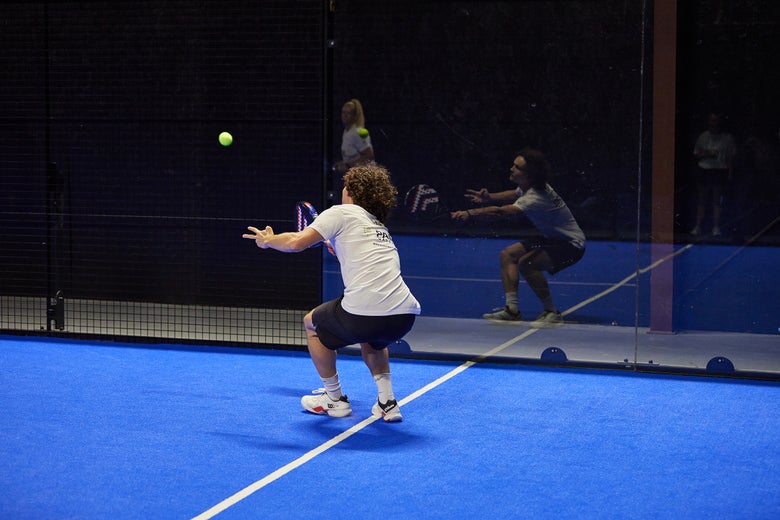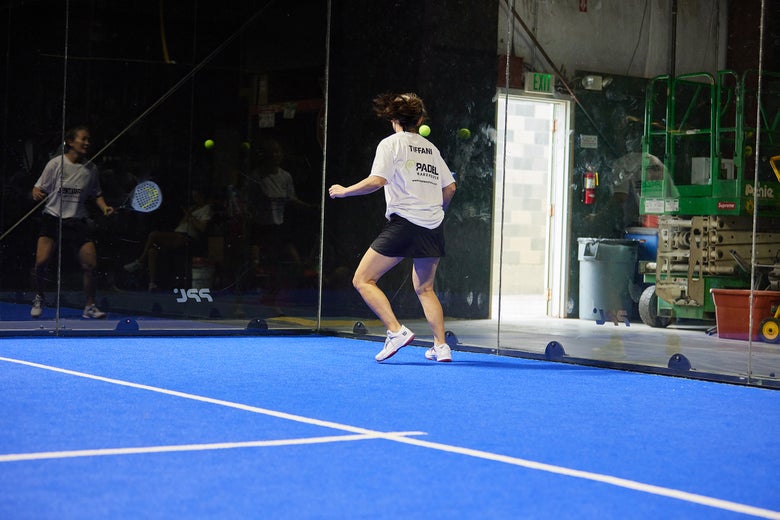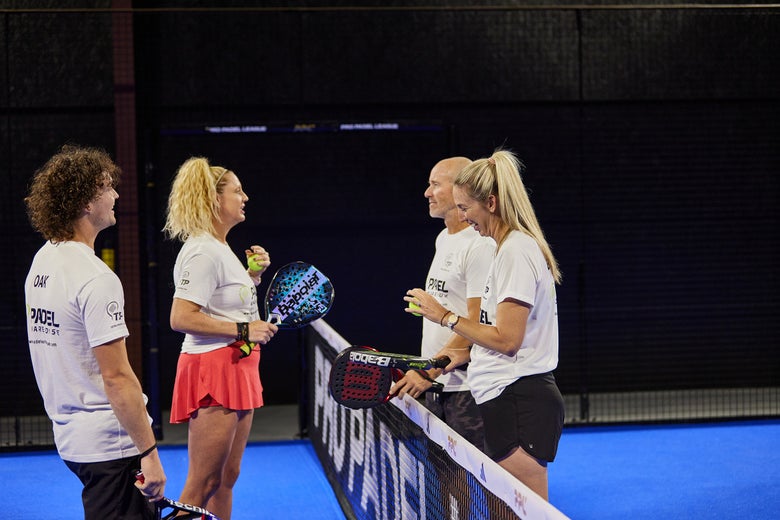The Glass is Your Friend: Using the Walls in Padel
In padel, the walls can seem intimidating at first, and learning how to respond to them and utilize them will take your padel game to the next level. This article will teach you how to use the walls to your benefit.
In padel, giving yourself the best possible shot is often achieved by letting the ball bounce before hitting it, especially if you are in the back of the court. On most hard or flat shots, the ball will kick back up off the wall, giving you more time to then get in position and hit a better shot. When warming up, try to let every ball that is at or past the service line to bounce, hit the back wall, and then kick up. This will help to get you in the habit of letting balls return to you, instead of chasing them down or trying to hit a difficult half-volley.

Reading the Walls
In padel, anticipating where the ball will go is of the utmost importance in order to create more opportunities for you and your partner. If the ball hits the side wall before the back wall, it will likely kick back into the middle of the court, nearer the opposite side player. If the ball hits the back wall and then the side wall, it will kick further up the court and along the side wall of the corner it came from. Coordinating and communicating who gets which ball with your partner will help ensure more balls in play for your team.
When in Doubt, Let it Bounce!
In padel, the half-volley from the back court is extremely tough to execute. While your tennis skills may help you in picking up a lot of these balls and getting back them in play, oftentimes it will lead to an easy shot (like a smash) for your opponents. Instead, use the walls to help you, instead of trying to prevent the ball from hitting them. Additionally, you will buy yourself more time to prepare by letting it bounce, as most shots will rebound off the back and spring upwards. Now, there are some exceptions here, like when the ball is going to die on the back wall or just before it, and in these cases, you will of course have to make a play. But again, the half-volley may not be the shot here, and instead, hitting it off the back wall may be the way to go.

Move with the Ball
In padel, staying static and not moving your feet can get you into a lot of trouble. Even when letting the ball rebound back to you, it's important to not let yourself or your feet get flat. Instead, try to move with the ball both backwards and forwards, so that you can time your contact more easily, and also use your forward momentum to assist you in redirecting the shot to the other side of the court.
Understanding the Side Walls on Return
There are two things to think about when thinking about the side glass walls for the return of serve.
Serve Defense - When returning serve in padel, knowing when to cut off the ball will help you get more serves back in play, especially against players who are looking to put you in the wall with their serve. You will have to decide whether or not you want to a. Let it Bounce Off the Side Wall or b. Cut the Ball Off. There is a simple rule for when you should cut the ball off when returning serve during padel.
-
- Before Service Line: Let it Bounce Off the Side Wall. If it going to bounce on the glass before crossing the service line, take a step back (if needed), let it bounce, and hit it as it rebounds to you.
- After Service Line: Cut the Ball Off: If the ball is going to bounce on the glass after crossing over the service line, then you should cut it off.

The Side Walls During a Rally
Using the side walls during a rally can prove a little trickier. It's important to know when to go for these shots and to utilize the walls to your advantage. While it is certainly quite difficult to play outright offense off the side walls, they are a little more viable for defense, for example, and you can use the side walls from the corner to produce a harsh angle with lots of spin typically that is harder to read for your opponents. If both of your opponents are at the net and you're out of either room or time for a lob, the side walls are a good last resort, just make sure you still hit the ball "forwards" in addition to the side wall itself.

The Back Wall: When to Lob, Where to Aim, and How Much Power
On the back wall, players will oftentimes refer to this part of the court as a last resort. In Padel, using the back wall is extremely hard in terms of power generation, aiming, and timing. Let's talk about it step by step.
- Timing: When thinking about when to hit the lob, try to only do it if necessary. If you're newer to padel, you might be tempted to use the back wall if you're already facing it, even if you're past the service line. Try to only use the back wall when you're behind the service line or if the ball is behind the service line.
- Aiming: Aiming a shot behind you that you cannot see is... tricky, to say the least. Typically, hitting this shot with your forehand if possible is the right way to go. For most players, the backhand typically has more rotation across the body, which makes aiming your shot off the back wall much more difficult. Just remember, wherever you angle into off the back wall when facing it, the ball will be headed the opposite direction when facing the net after hitting the shot. So, if you aim left when facing the wall, the ball will head towards the other opponent's more powerful player (usually). If you aim right, the ball will head towards the more defensive player. Regardless, it's probably better to do straight-on, which will rebound more often back into the court. Additionally, aim a little higher on the wall to ensure that the ball is more likely to go over, as shots lower than halfway along the wall have a much more difficult time going back over the net.
- Power. It is crucial to hit the ball off the back wall hard enough that it goes over the net, but you also don't want to hit it too hard, in case it ends up sailing into your opponent's back wall. For beginning players, you will likely have to overcompensate in terms of how hard you try to hit these off-the-wall shots, as more power is needed than you might think. As you progress in the game, the amount of power will likely have to be dialed back in order to make sure you don't over hit the lob.
Not only is the glass your friend, but so are the people you're sharing the court with (hopefully). Try to find ways to learn with your partner which balls to get and which ones you should let your partner track down. Remember, the walls are there to help!
